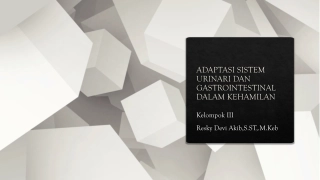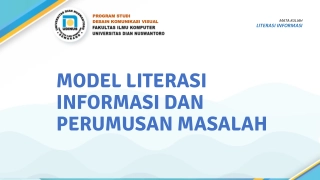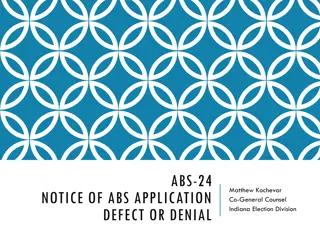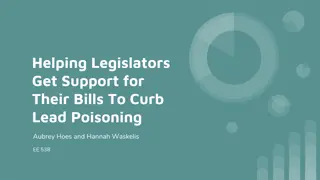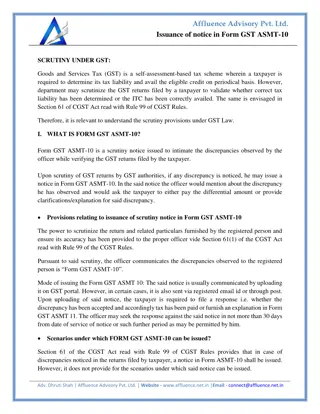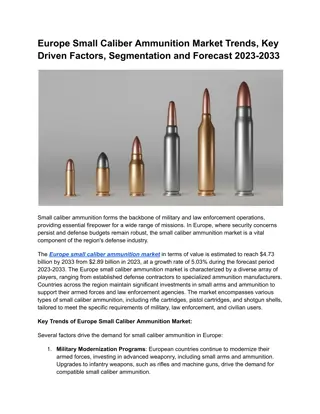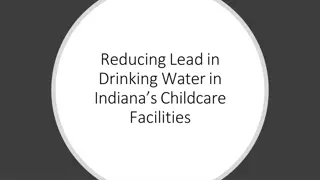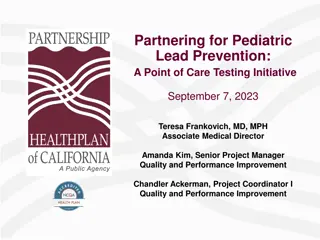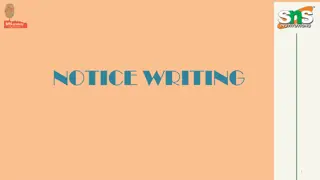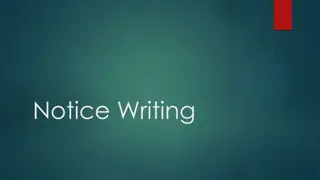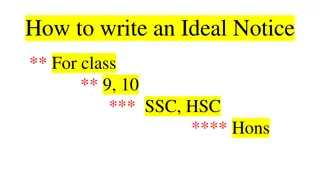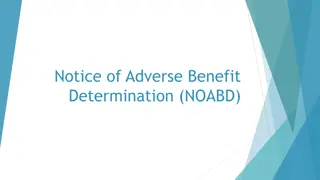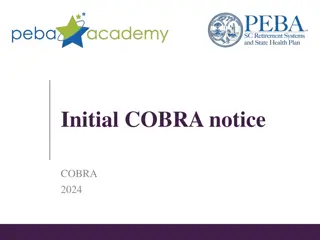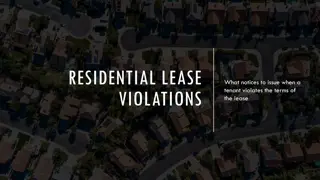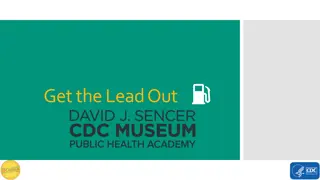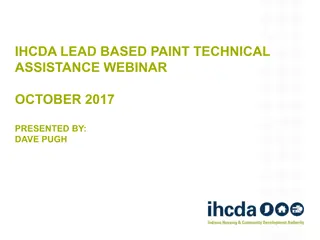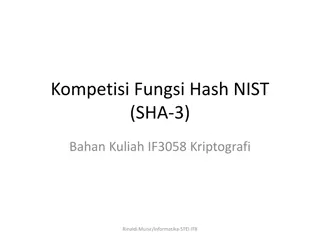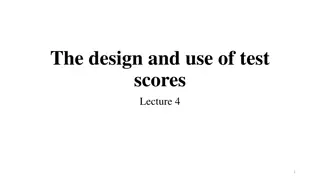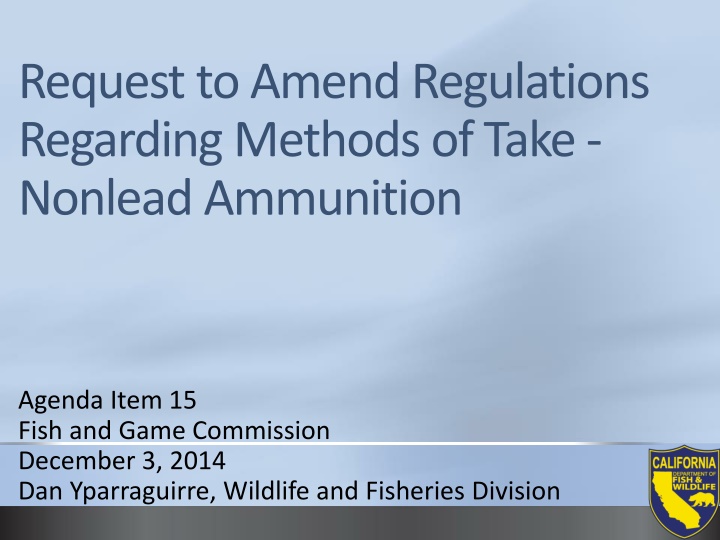
Amend Regulations for Nonlead Ammunition Methods
Explore the process and progress of amending regulations for nonlead ammunition methods, including changes in regulatory text like defining nonlead ammunition and implementing a phased approach to prohibiting lead ammunition use for wildlife take.
Download Presentation

Please find below an Image/Link to download the presentation.
The content on the website is provided AS IS for your information and personal use only. It may not be sold, licensed, or shared on other websites without obtaining consent from the author. If you encounter any issues during the download, it is possible that the publisher has removed the file from their server.
You are allowed to download the files provided on this website for personal or commercial use, subject to the condition that they are used lawfully. All files are the property of their respective owners.
The content on the website is provided AS IS for your information and personal use only. It may not be sold, licensed, or shared on other websites without obtaining consent from the author.
E N D
Presentation Transcript
Request to Amend Regulations Regarding Methods of Take - NonleadAmmunition Agenda Item 15 Fish and Game Commission December 3, 2014 Dan Yparraguirre, Wildlife and Fisheries Division
Process and Progress to Date 3 Wildlife Resources Committee meetings 13 other workshops and meetings Today s request to go to Notice Discussion in February Possible Adoption in April Started the CEQA process Completed Initial Study and Checklist Held Public Scoping Meeting Draft Environmental Document in January
Changes in Regulatory Text September WRC handed out draft text 5 technical changes for clarity and consistency: Moved nontoxic shot language from General Provisions (c)(2) to Definitions (b)(3). b) Definitions. (1) A projectile is any bullet, ball, sabot, slug, buckshot, shot, pellet or other device that is expelled from a firearm through a barrel by force. (2) Nonlead ammunition is any centerfire, shotgun, muzzleloading, or rimfire ammunition containing projectiles certified pursuant to subsection (b)(3) or subsection (f). (3) Shotgun ammunition containing pellets composed of materials approved as nontoxic by the U.S. Fish and Wildlife Service, as identified in Section 507.1 of these regulations, is considered certified. (4) A nonlead projectile shall contain no more than one percent lead by weight, as certified pursuant to subsection (b)(3) or subsection (f).
Changes in text contd Revised cross references in General Provisions to reflect the above change. (c) General Provisions. (1) Except as otherwise provided in this section, it is unlawful to possess any projectile containing lead in excess of the amount allowed in subsection (b)(4) and a firearm capable of firing the projectile while taking or attempting to take wildlife. (2) The possession of a projectile containing lead in excess of the amount allowed in subsection (b)(4) without possessing a firearm capable of firing the projectile is not a violation of this section.
Changes in text contd Added clarification statement in subsection (d) (d) Phased Approach to Prohibit the Use of Lead Ammunition for the Take of Wildlife. The use of lead projectiles is authorized until the effective dates described in subsections (d)(1), (d)(2), and (d)(3).
Changes in text contd Removed the phrase except as provided in subsection (c) from subsections (d)(1), (d)(2), and (d)(3) since that language occurs under General Provisions. Revised cross reference in subsection (d)(2) to reflect move of language regarding nontoxic shot to Definitions. No changes in proposed phasing from September
Proposed Phases: 2015: Nonlead required for: Wildlife Areas and Ecological Reserves Bighorn sheep 2016: Nonlead required for: Larger (most) game birds, including turkeys (waterfowl size shot) Small game mammals (by shotgun) Non-game, depredation and furbearers (by shotgun) Except on Licensed Game Bird Clubs (2019)
Proposed Phases contd 2019 - Nonlead would be required for the take of all wildlife: All big game All remaining game birds Small game mammals (by rifle/handgun) Non-game, depredation and furbearers (by rifle/handgun) Muzzleloaders
Wildlife Society Bulletin DOI: 10.1002/wsb.504 A Comparison of Lead and Steel Shot Loads for Harvesting Mourning Doves BRIAN L. PIERCE,1 Institute of Renewable Natural Resources, Texas A&M University, College Station, TX 77843-2258, USA THOMAS A. ROSTER, 1190 Lynnewood Boulevard, Klamath Falls, OR 97601, USA MICHAEL C. FRISBIE, Texas Parks and Wildlife Department, 4200 Smith School Road, Austin, TX 78744, USA COREY D. MASON, Texas Parks and Wildlife Department, 4200 Smith School Road, Austin, TX 78744, USA JAY A. ROBERSON, Texas Parks and Wildlife Department, 4200 Smith School Road, Austin, TX 78744, USA
http://www.tpwd.state.tx.us/huntwild /wild/game_management /dove_summary/
Compared several metrics of harvest Among 1 lead and 2 steel loads Using volunteer hunters with unmarked shells Trained professional observers, who observed: No differences among shot types in birds bagged or wounded per shot No differences among shot types in distance of birds bagged or wounded Necropsy analysis: No differences in 3 measures of killing efficiency Ammo and choke combinations with higher pattern density = more effective
Cooperative National Dove Hunter Survey FINDINGS
National Dove HunterSurvey Sample The 26-question survey was sent to randomly selected hunters, drawn from the Harvest Information Program (HIP) database, in the 40 states with dove hunting seasons in June 2013. Sample size was approx. 800 per state to ensure survey results are applicable at the national, regional (e.g., Dove Management Unit (DMU) and state levels. 30,382 surveys successfully delivered, 12,631 hunters responded earning a 41.6% response rate. Rounded margin of error for national estimates is 1%, and for DMU estimates, 2% (95% confidence level).
DOVE HUNTERS ARE UNCERTAIN ABOUT THE IMPACT OF LEAD ON THE HEALTH OF DOVES & OTHER WILDLIFE Don t know if eating lead shot causes doves to die (~50%) Concerned that non-lead shot cripples doves more than lead shot (~50%) Roughly 1 in 5 respondents answered that concerns about lead shot consumption by wildlife have been explained to hunters the other 4 of 5 Think because doves have short lifespan, lead exposure doesn t effect dove populations (40%) hunters are either neutral, don t know, or agree that Believe that the U.S. can t limit health effects of lead on dove populations because countries south of U.S.-Mexico border have no restrictions (51%) explanation is lacking.
Dove hunters believe that hunting participation would be impacted. But if non-lead shot was required (1) 36% would probably quit hunting doves if required to use non-lead shot (39% disagreed) (2) ~50% think requiring non-lead shot would reduce the number of young people recruited to hunting (3) ~50% would probably reduce the number of trips they take to go dove hunting
Dove hunters mainly get their info from: (1) Friends & family (79%) (2) Magazines (64%) (3) State wildlife agency (61%) (4) Internet (58%) (5) U.S. Fish & Wildlife Service (47%) (6) TV (36%) (7) Sporting goods store (32%) (8) Newspapers (28%) (9) Radio (13%)
DOVE HUNTERS TRUST AND THEY SORT OF TRUST Avid/experienced dove Medium Level of Trust hunters to represent the Game wardens, hunting organizations, wildlife biologists, hunting guides, ammunition manufacturers and hunting businesses interest of dove hunters & they rely mostly upon friends/family and the Internet for hunting Medium-Low Level of Trust information. Outdoor writers and staff at sporting goods stores
http://www.fishwildlife.org /index.php?section=dove-hunter- survey&activator=89 Or type National Dove Hunter Survey in a search engine
Take home: There is some work to be done in outreach and communication Questions?

